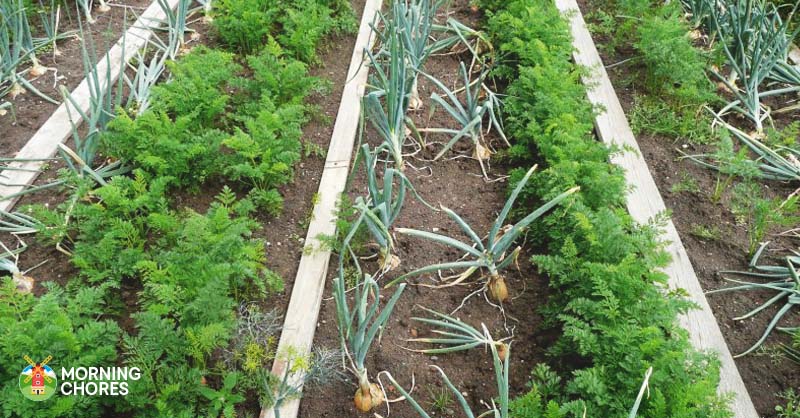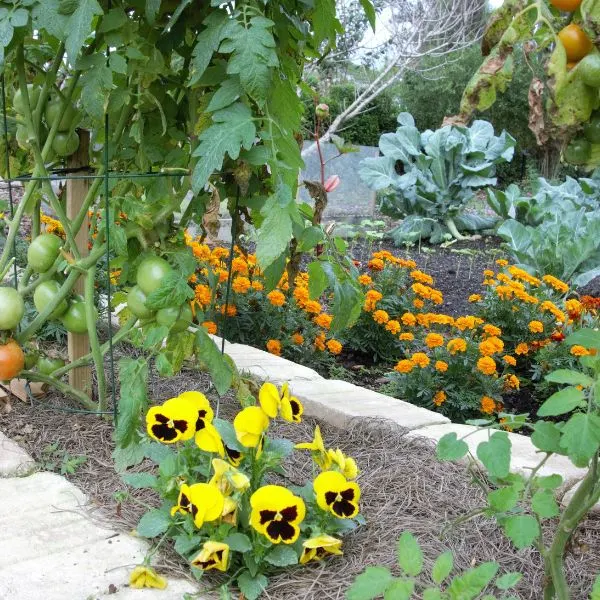The Best Companion Plants For Currants: Grow More Fruit With These Beneficial Neighbors
The Best Companion Plants for Currants: Grow More Fruit with These Beneficial Neighbors
Currants are a delicious and versatile fruit that can be enjoyed fresh, cooked, or even made into wine. They are also a relatively easy fruit to grow, but there are a few things you can do to help them thrive. One of the best ways to do this is to plant companion plants.
Companion planting is the practice of planting certain plants together in order to benefit each other. There are many different companion plants that can be beneficial for currants, but some of the best include:
- Allium. Alliums, such as garlic, onions, and chives, help to repel pests and diseases from currants. They also help to improve the flavor of the fruit.
- Clover. Clover is a nitrogen-fixing plant, which means that it helps to enrich the soil around the currants. This can lead to healthier plants and larger yields.
- Marigolds. Marigolds help to repel pests such as aphids, spider mites, and whiteflies. They also attract beneficial insects such as ladybugs and hoverflies, which can help to control pests.
- Nasturtiums. Nasturtiums help to repel pests such as aphids, cabbage loopers, and flea beetles. They also attract beneficial insects such as ladybugs and parasitic wasps.
- Potatoes. Potatoes help to suppress weeds around the currants. They also help to improve the drainage of the soil, which can be beneficial for currants.
In addition to these specific plants, there are a few general principles of companion planting that you can follow when planting currants. For example, you should avoid planting currants near plants that are susceptible to the same pests and diseases. You should also avoid planting currants near plants that compete for the same nutrients.
By following these simple tips, you can help your currants thrive and produce a bumper crop of delicious fruit.
Here are some additional benefits of companion planting with currants:
- Improved pollination. Some companion plants, such as marigolds and nasturtiums, attract beneficial insects such as bees and butterflies. These insects help to pollinate the currants, which can lead to a higher yield of fruit.
- Disease and pest control. As mentioned above, some companion plants help to repel pests and diseases. This can help to keep your currants healthy and free of problems.
- Enhanced soil quality. Some companion plants, such as clover, are nitrogen-fixing plants. This means that they can help to enrich the soil around the currants, which can lead to healthier plants and larger yields.
- Enhanced aesthetics. Companion planting can also help to enhance the aesthetics of your garden. For example, you could plant flowering companion plants that will bloom at the same time as your currants. This will create a beautiful and productive garden.
If you are looking for ways to improve the health and productivity of your currant plants, companion planting is a great option. By planting the right companion plants, you can help your currants thrive and produce a bumper crop of delicious fruit.
Currants are a delicious and versatile fruit that can be enjoyed in many different ways. But did you know that there are certain plants that can help your currants grow even better? Companion planting is the practice of planting certain plants together to benefit each other. For example, some companion plants for currants can help to repel pests, improve soil quality, or attract pollinators.
If you're interested in learning more about companion planting for currants, I recommend visiting Gardenia Inspiration. This website has a wealth of information on the topic, including a list of recommended companion plants, tips for planting and caring for currants, and more.
FAQ of companion plants for currants
Question 1: What are the best companion plants for currants?
Answer: Some of the best companion plants for currants include:
- Chamomile: Chamomile helps to repel aphids, which are a common pest of currants.
- Chives: Chives help to repel pests such as aphids, ants, and spider mites. They also improve the flavor of currants.
- Kiwi: Kiwi plants help to attract beneficial insects, such as ladybugs and lacewings, which prey on pests that can damage currants.
- Marigolds: Marigolds help to repel pests such as aphids, nematodes, and whiteflies. They also improve the drainage of soil around currant bushes.
- Nasturtiums: Nasturtiums help to repel pests such as aphids, cabbage worms, and flea beetles. They also attract beneficial insects, such as ladybugs and lacewings.
Question 2: What plants should I avoid planting near currants?
Answer: Some plants that you should avoid planting near currants include:
- Potatoes: Potatoes can attract the same pests as currants, such as aphids and spider mites.
- Raspberries: Raspberries and currants are both susceptible to the same diseases, such as white pine blister rust. Planting them too close together can increase the risk of disease transmission.
- Tomatoes: Tomatoes can attract the same pests as currants, such as aphids and whiteflies.
Question 3: How do companion plants benefit currants?
Answer: Companion plants can benefit currants in a number of ways, including:
- Attracting beneficial insects: Beneficial insects, such as ladybugs and lacewings, help to prey on pests that can damage currants. Companion plants that attract these insects can help to keep your currant bushes pest-free.
- Repelling pests: Some companion plants, such as chamomile and chives, have strong scents that repel pests. Planting these plants near your currant bushes can help to keep pests away.
- Improving soil quality: Some companion plants, such as nasturtiums and clover, help to improve the quality of the soil around currant bushes. This can help to improve the health and productivity of your currant bushes.
- Providing support: Some companion plants, such as trellises and beans, can provide support for currant bushes. This can help to keep your currant bushes upright and prevent them from falling over.
Question 4: How far apart should I plant companion plants with currants?
Answer: The distance between companion plants and currants will vary depending on the specific plants that you are planting. However, as a general rule, you should plant companion plants at least 1-2 feet away from currant bushes. This will give the plants enough space to grow and thrive.
Question 5: What are some other benefits of companion planting?
Answer: In addition to the benefits listed above, companion planting can also:
- Reduce the need for pesticides: By attracting beneficial insects and repelling pests, companion planting can help to reduce the need for pesticides. This is beneficial for the environment and for your health.
- Improve the overall health of your garden: Companion planting can help to improve the overall health of your garden by increasing the biodiversity of your plantings. This can make your garden more resilient to pests and diseases.
- Save you money: By reducing the need for pesticides and fertilizers, companion planting can save you money in the long run.
Image of companion plants for currants
- Allium (Garlic, Onions, Chives): These plants help to deter pests from currant bushes.

- Borage (Borage): This plant attracts beneficial insects to the garden, which can help to control pests.

- Cucumbers (Cucumbers): These plants help to suppress weeds around currant bushes.

- Marigolds (Marigolds): These plants help to repel nematodes, which can be a problem for currant bushes.

- Nasturtiums (Nasturtiums): These plants help to attract pollinators to the garden, which can help to improve fruit set on currant bushes.

Post a Comment for "The Best Companion Plants For Currants: Grow More Fruit With These Beneficial Neighbors"